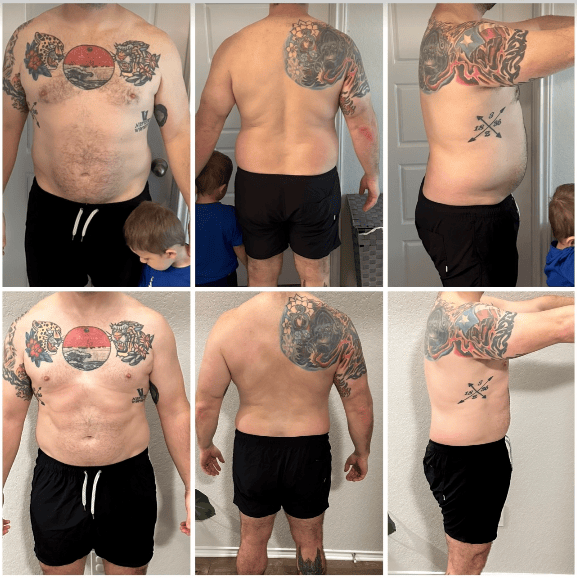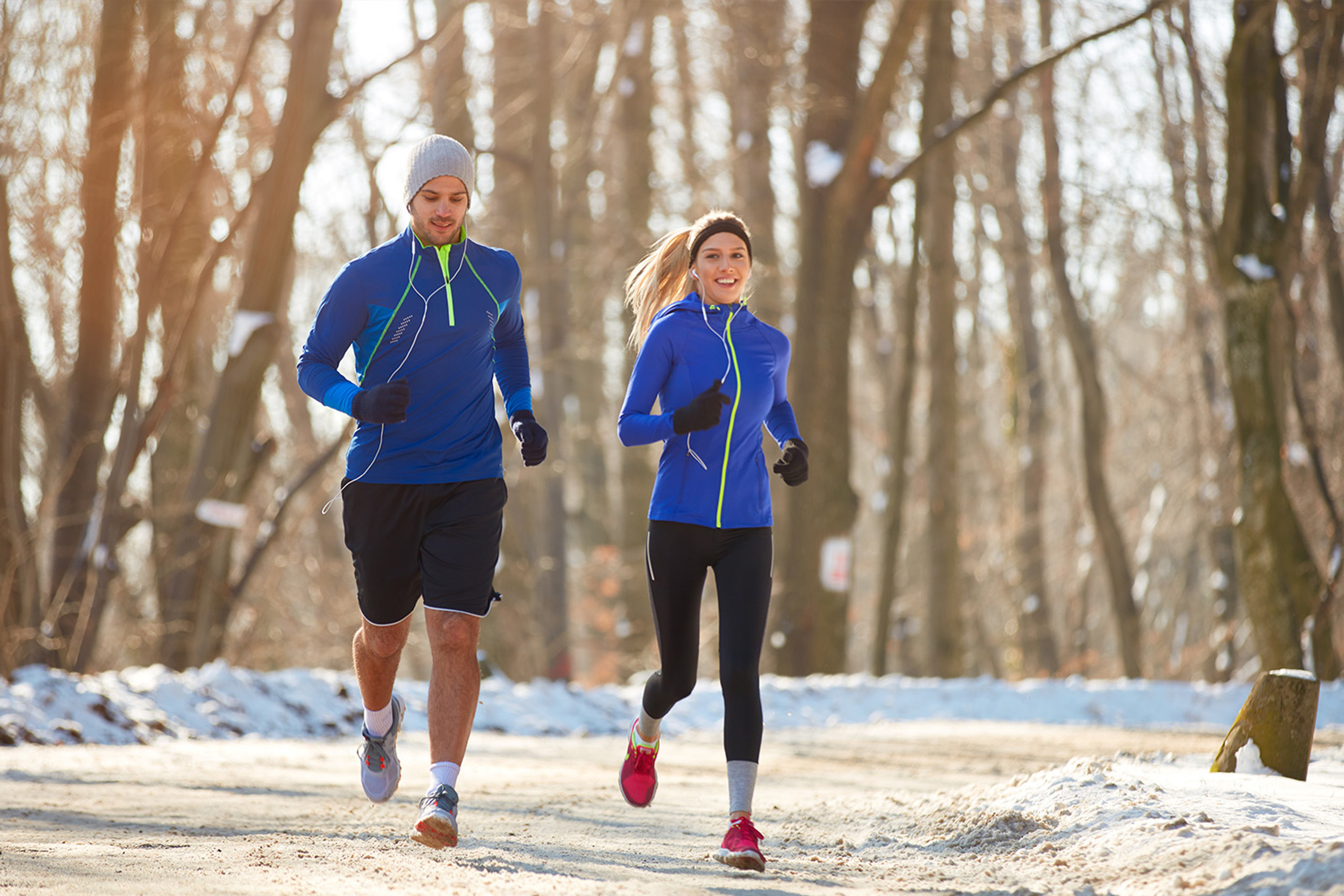Winter is one of the best times of year to run. You not only get to take in the snow-covered scenery, but you also get to avoid the sweat-inducing misery of running in the humid summer months. This doesn’t mean that you don’t need special gear for cold weather running.
On the contrary, you need to have the proper items to wear and carry with you in order to stay warm and safe on the trails and roads. Are you ready to see the ultimate cold weather running gear checklist? Keep reading to see the one My Fit Foods put together!
Why Do You Need Winter Running Gear?
You might think that all you need to run in the winter is a pair of shoes, some shorts, and a shirt, right? After all, you’ll get sweaty while running outside, so why bundle up?
As it turns out, bundling up is essential in order to protect you from frostbite and potential slips and falls on the ice and snow. The right gear is crucial to prevent you from getting hurt.
Focus on Layers
How can you keep from overheating while running in the winter? The trick is layers like running tights, long-sleeve shirts under your running jacket and pants. This can prevent you from getting too warm, and at the same time, keep you just warm enough.
Aim for a base layer, a mid layer, and an outer layer if possible, along with accessories like a beanie and running gloves or mittens for extra warmth. Breathable, quick-drying materials that are both warm and comfortable make for some of the best winter running layers. When you can, layer with items made from materials like merino wool, Smartwool, or even bamboo viscose.
You also need to focus carefully on the weather, particularly any precipitation falling from the sky, the wind, and the overall temperature, in order to ensure that your layers are correct.
Keeping the Temperature in Mind
A good rule of thumb is to dress with the temperature in mind, plus or minus between five and 10 degrees. For example:
- Running in the Rain – Yes, it still rains in the winter. Since you run the risk of getting soaked, even with a waterproof jacket (all of those puddle splashes can do a number on you), it’s best to dress for weather that’s between five and 10 degrees cooler than it actually is.
- Running in the Wind – Winters are known for being cold and windy, so the weather is unavoidable if you want to run outdoors. Since the wind will cut through any clothing that you’re wearing, even if you run with the wind, not against it, it’s best to adhere to the five and 10-degree rule as you would when running in the rain.
- Running in Regular Winter Weather – Thankfully “regular” winter weather (defined as simply being cold, with or without snow and ice on the ground), is a bit easier to dress for. You need to wear layers of clothing that are easy to remove when you get too warm. In addition, you can dress for weather that’s between five and 10 degrees warmer than it actually is outside. That might even mean wearing a t-shirt that wicks moisture and some running shorts if you live in a warm enough climate.
What Do You Need When Running in the Winter?
Winter running, done to keep you in good physical shape, requires a number of pieces of gear designed to keep you safe and warm. You’ll need water-resistant shoes with cushioning soles that prevent you from slipping on the ice, as well as clothing that keeps you warm (but can be taken off if you get too warm.) Here’s a quick breakdown of the basics.
Clothing You Can Layer
Layering clothing is the key to running comfortably in the winter. That big insulated jacket or windbreaker paired with snow boots may keep you warm when walking around outdoors, going to the car and back, but it will make for some uncomfortable and overly warm running gear.
Instead, choose items that are designed for running and have a specific purpose. For example, since the cold weather will send your body into protection mode, where it sends most of your blood to your organs in order to keep them warm and functioning, you need to ensure that the first layers of clothing that you wear match that purpose. You’ll need some moisture-wicking base layers that wick sweat away, keeping you dry and comfortable in even the coldest weather.
Additional Layers of Clothing
The next layer of clothing should be designed to help you retain the heat that your body produces, which will keep you warm. A long-sleeved running shirt, a pair of running pants (or shorts, if you prefer and it’s above 45 degrees), and an item that you can remove easily mid-run, like a running vest or half-zip shirt, will work.
Finally, your outer layer needs to give you protection from the weather. If it’s raining or snowing, or the wind is blowing hard, you’ll need a water-repellent jacket that provides you with some coverage. If there isn’t active precipitation, then you might be able to get away without this outer layer, as long as you can warm up and stay toasty enough in your base and middle layers.
A Quick Tip
Since you’ll be layering your clothing, you want to choose items that are thin, yet effective. Otherwise, you could end up with a number of uncomfortable, bulky layers. This isn’t the tme for your fleece hoodie, even though it might be incredibly cold outside due to weather and wind chill.
Spend your lunch break or some other time wandering around a fitness clothing store and checking out the options. Specialty items designed for this purpose that fit comfortably will be best.
Shoes With Slip-Proof Soles
When it comes to running shoes, you have several options. You can either use your existing shoes and place ice cleats over them on those particularly icy and snowy days, or you can choose trail running shoes.
This type of shoe has a sole with some additional grip that can help you keep your balance in inclement weather. There are plenty of types on the market, so feel free to test out some to see if they have the gripping power that you prefer.
However, if the trails are clear and dry, and the weather is just cold, you can get away with wearing standard running shoes. Just be prepared to slip on those ice cleats should the weather turn while you’re out there.
Gloves and a Headband
While some runners choose to wear a hat (one of those sweat-wicking thin ones, of course), a headband will also do the trick. It will keep your ears warm, while at the same time, allowing any excess heat to escape through the top of your head, preventing you from overheating.
On top of a headband, you’ll also need a good pair of gloves or mittens with thumbholes. If you’ve ever fallen on the ice without gloves on, then you know how badly it stings. You need to protect your hands, as well as keep them warm since your extremities will be susceptible to the cold. In addition, a wind-resistant face mask can help keep your head from getting too cold.
Cotton gloves, while easy to find, won’t really work for this purpose, since they’ll get wet too easily, especially if you slip and fall. Plus, they won’t wick away any sweat, actually making your hands cold. Instead, choose a pair of specialty fitness gloves. They’ll give you the protection that you need while wicking away sweat and allowing you to operate your smartphone at the same time.
The Right Socks
Obviously, socks do more than just prevent your shoes from giving you blisters. They also keep your feet and legs warm. If the weather is chilly, but above 32 degrees Fahrenheit, you can get away with wearing a simple pair of wool running socks. However, if the weather is colder than that, you’ll need a pair that go up to your knees in order to provide you with extra warmth.
Additional Items
For those particularly cold days, you’ll need some additional gear. A neck gaiter or buff can keep your neck warm, and it’s lightweight enough to not feel like a hefty add-on to your layered outfit. Buffs are useful because they can be pulled up over your mouth in order to add some protection from the chilly weather.
Another option is a set of hand warmers. These are disposable and easy to find in most stores. You simply open the package and shake the warmer to get it to work. From there, you just place one in each of your pockets, and you have some optional extra warmth when you really need it.
Also, you need to prevent your water supply from freezing. There’s nothing worse than realizing that your water froze when you want a drink the most. Choose an insulated hydration bag designed for this purpose, and you’ll never have to worry about frozen water again.
Tips for Running in Cold Weather
If you plan on running in cold weather, you need to be properly prepared. Wearing the right layers, choosing shoes with non-slip soles, and having all of the right accessories, from gloves to socks will help. Have questions about cold weather running gear, or nutrition to keep you properly fueled? Contact us here.
Sources:
Best Cold Weather Running Gear Must-Haves | Run to the Finish
12 Tips for Running in the Rain | Very Well Fit.
Winter Running Gear Guide: What to Wear When Running in the Cold | Polar
About Author: Mario Mendias





